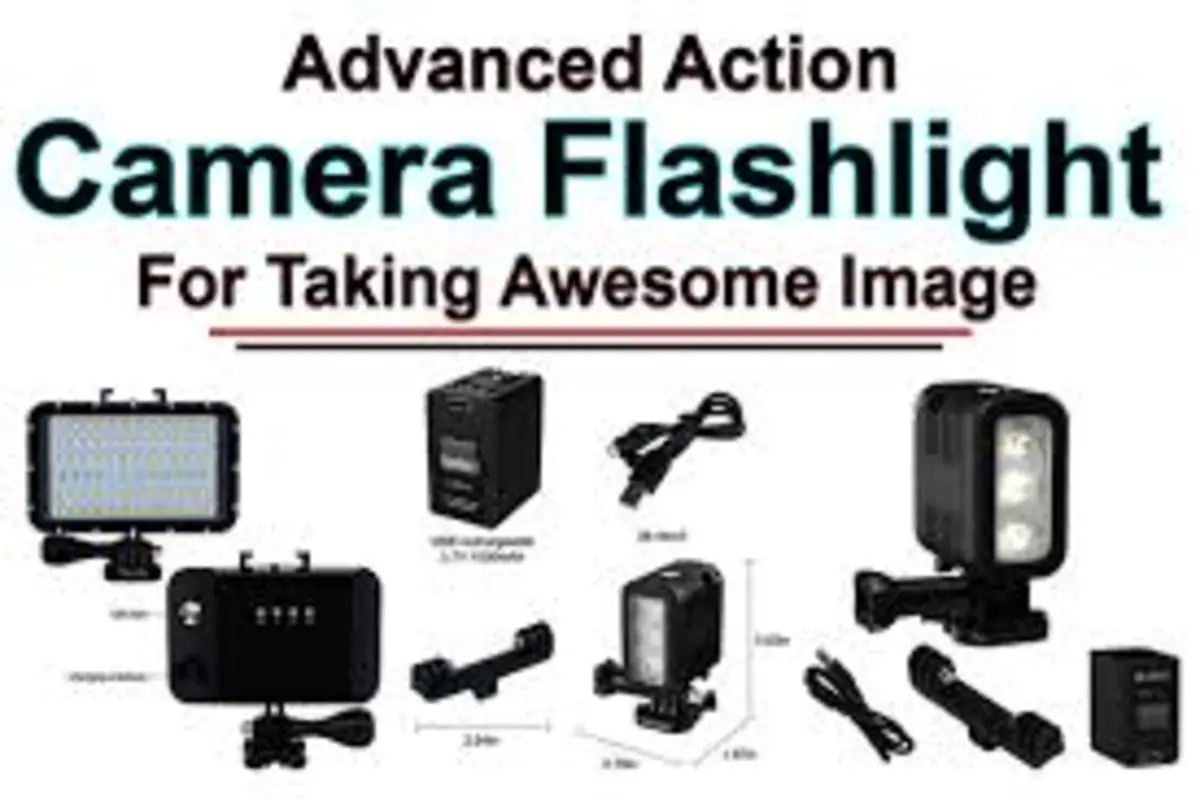Introduction
Welcome to the world of action camera flashlights, where every shot is illuminated with brilliance and clarity. In the realm of action photography, capturing the perfect moment often hinges on the quality of lighting. Whether you’re shredding down a mountain trail, diving into the depths of the ocean, or conquering rugged terrain, having the right lighting can make all the difference in immortalizing your adventures.
In this comprehensive guide, we’ll delve into the intricacies of action camera flashlights, exploring their significance, functionality, and how they can elevate your photography game to new heights. From understanding the anatomy of these essential accessories to mastering advanced lighting techniques, you’ll be equipped with the knowledge and skills to capture stunning visuals in any environment.
Why Action Camera Flashlights Matter
In the fast-paced world of action photography, where every second counts, having the ability to control and manipulate lighting can mean the difference between a mediocre shot and a breathtaking masterpiece. While natural light can be unpredictable and limited, action camera flashlights offer a versatile solution to illuminate your subjects with precision and clarity.
One of the key reasons why action camera flashlights matter is their ability to enhance visibility and detail in challenging environments. Whether you’re exploring dark caves, navigating dense forests, or shooting in low-light conditions, these compact yet powerful devices provide a reliable source of illumination to ensure your subjects are properly lit and your images are crystal clear.
Moreover, action camera flashlights enable photographers to unleash their creativity and experiment with different lighting effects. From dramatic shadows to soft, flattering light, these versatile tools offer endless possibilities for capturing dynamic and visually striking compositions. By harnessing the power of light, photographers can elevate their storytelling and convey emotion, depth, and atmosphere in their images.
Anatomy of Action Camera Flashlights
To understand how action camera flashlights can transform your photography, it’s essential to familiarize yourself with their basic anatomy and functionality. While the specific design may vary between models and brands, most action camera flashlights share common components that contribute to their performance and versatility.
At the heart of every action camera flashlight is the light source itself, typically in the form of high-intensity LEDs (Light-Emitting Diodes) or traditional bulbs. LEDs are preferred for their energy efficiency, durability, and ability to produce a bright, even beam of light. Depending on the model, action camera flashlights may feature multiple LEDs with varying brightness levels and color temperatures to suit different shooting conditions.
In addition to the light source, action camera flashlights are equipped with a rugged housing that protects the internal components from water, dust, and impact damage. The housing is often made from lightweight yet durable materials such as aluminum or polycarbonate, ensuring the flashlight can withstand the rigors of outdoor adventures.
Another crucial component of action camera flashlights is the reflector or lens, which helps to focus and direct the light emitted by the LEDs. Reflectors come in various shapes and designs, each tailored to produce specific beam patterns such as spot, flood, or adjustable focus. By choosing the right reflector, photographers can customize the spread and intensity of the light to suit their shooting preferences.
Furthermore, action camera flashlights are powered by rechargeable lithium-ion batteries or disposable cells, providing the necessary energy to sustain prolonged use in the field. Battery life and capacity vary depending on factors such as brightness level, usage patterns, and ambient temperature, so it’s essential to choose a flashlight with sufficient runtime for your needs.
How Action Camera Flashlights Work
At first glance, action camera flashlights may seem like simple devices, but their inner workings are surprisingly sophisticated. To understand how these compact accessories produce such powerful illumination, let’s take a closer look at the key components and principles behind their operation.
The primary function of an action camera flashlight is to generate and emit light in a controlled and efficient manner. This process begins with the light source, which consists of multiple LEDs arranged in a compact array. LEDs are preferred for their high efficiency, low power consumption, and long lifespan, making them ideal for portable lighting applications.
When powered on, the LEDs inside the flashlight convert electrical energy into light through a process known as electroluminescence. As electrons flow through the semiconductor material within the LED chip, they release energy in the form of photons, which manifest as visible light. By adjusting the electrical current flowing through the LEDs, photographers can control the intensity and brightness of the emitted light.
In addition to the light source, action camera flashlights are equipped with a reflector or lens that helps to shape and direct the light output. Reflectors are typically made from polished aluminum or specialized optical materials designed to maximize light efficiency and minimize losses. By carefully designing the shape and curvature of the reflector, manufacturers can achieve specific beam patterns such as spot, flood, or adjustable focus to suit different photography scenarios.
Furthermore, action camera flashlights feature advanced electronics and control circuits that regulate power delivery, adjust brightness levels, and prevent overheating. These smart features ensure optimal performance and safety during extended use, allowing photographers to focus on capturing the perfect shot without worrying about technical issues.
Choosing the Right Action Camera Flashlight
With a myriad of options available on the market, choosing the right action camera flashlight can be a daunting task. From compact keychain lights to high-powered torches, there’s no shortage of choices when it comes to illuminating your adventures. To help you navigate the sea of options and find the perfect flashlight for your needs, consider the following factors:
- Brightness and Output: The brightness of an action camera flashlight is typically measured in lumens, which indicates the total amount of light emitted by the device. Higher lumen ratings generally equate to brighter illumination, but it’s essential to strike a balance between brightness and battery life. Consider your typical shooting scenarios and choose a flashlight with an appropriate lumen output to ensure optimal visibility without sacrificing runtime.
- Beam Pattern and Angle: Action camera flashlights come with different beam patterns and angles to suit various photography styles and environments. Spot beams provide concentrated illumination over long distances, making them ideal for long-range shots or spotlighting specific subjects. Flood beams, on the other hand, offer wider coverage and evenly distribute light across the frame, making them suitable for capturing expansive landscapes or group shots.
- Size and Weight: When selecting an action camera flashlight, consider the portability and convenience of the device, especially if you’ll be carrying it during outdoor adventures. Opt for a compact and lightweight flashlight that won’t add unnecessary bulk to your gear setup. Additionally, choose a flashlight with a durable and ergonomic design that’s easy to handle and operate in challenging conditions.
- Durability and Weather Resistance: Outdoor photography often exposes equipment to harsh weather conditions such as rain, snow, and extreme temperatures. Look for action camera flashlights with rugged construction and IPX waterproof ratings to ensure they can withstand the rigors of outdoor use. Additionally, opt for flashlights with impact-resistant housings and scratch-resistant lenses to minimize damage from accidental drops or collisions.
- Battery Type and Runtime: Consider the type of batteries used in the flashlight and their runtime capabilities to ensure uninterrupted shooting sessions. Rechargeable lithium-ion batteries offer the convenience of USB charging and can be easily replenished in the field. However, it’s essential to carry spare batteries or power banks for extended outings where access to electricity may be limited. Alternatively, disposable batteries provide longer runtime but require regular replacement, which can be costly and less environmentally friendly in the long run.





